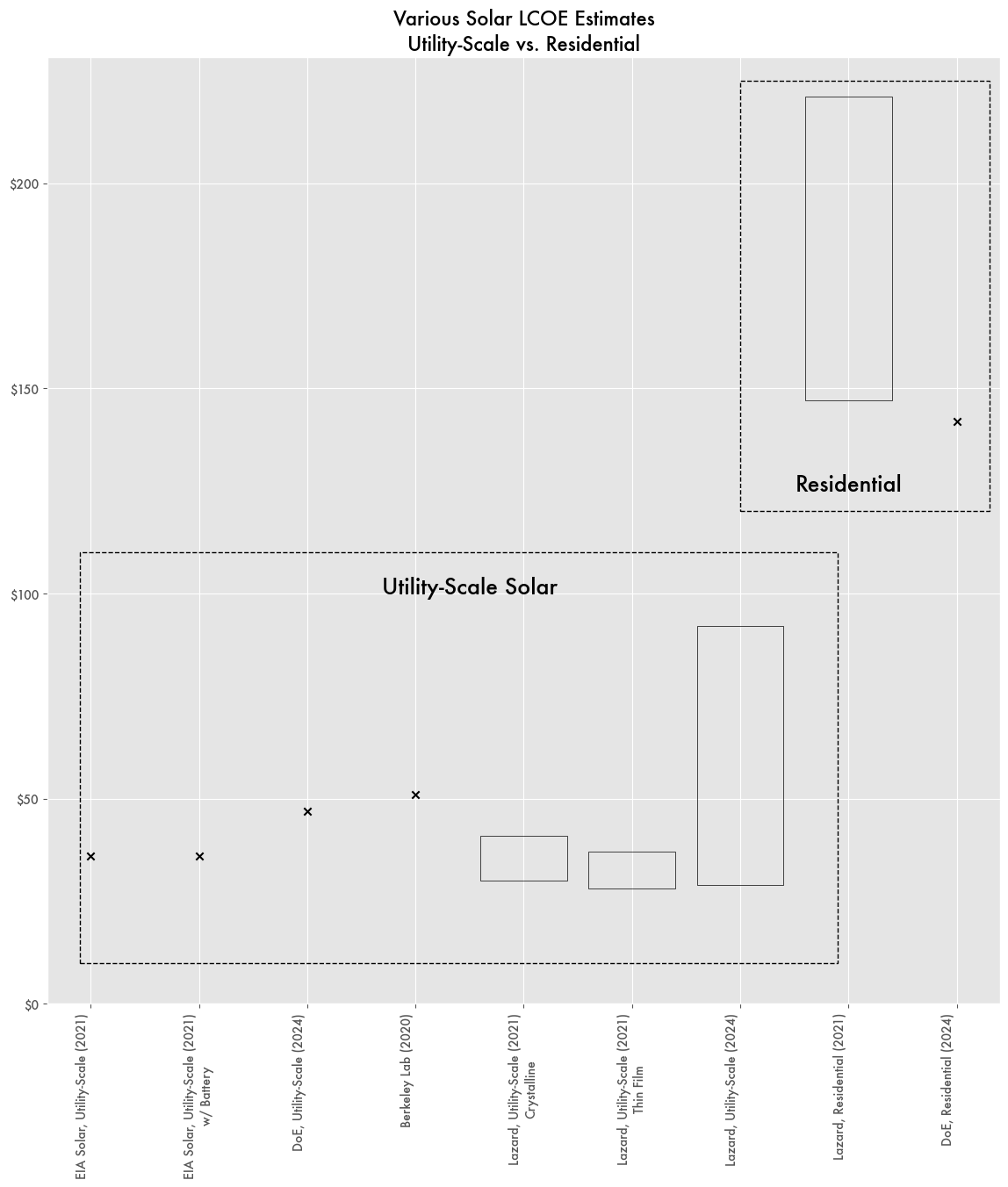Solar Is Only Cheap When It's Not On a Roof
Levelized cost of electricity (LCOE) is a common metric for determining how expensive a power source is for electricity generation. It attempts to factor in all costs from the price of fuel to maintenance and the costs of borrowing capital.
For solar photovoltaics, the Energy Information Administration (EIA) estimates the levelized cost to be $36.09 per megawatt-hour (MWh) in 2021—the cheapest form of electricity generation below that of wind and natural gas.
But that estimate for LCOE is specifically for utility-scale solar—the kind seen on large solar farms rather than residential or commercial rooftops. While utility-scale solar represents the majority of solar generation, that metric ignores the 26 percent of solar generation from small-scale sources, and small-scale generation has a significantly higher LCOE value because it often can’t benefit from economies of scale or solar tracking technology.
EIA doesn’t provide LCOE estimates for residential or rooftop solar. But according to investment firm Lazard, which produces a well-established report on LCOE, LCOE for rooftop solar in 2021 ranged between $147/MWh and $221/MWh—at least four times that of EIA’s utility-scale estimate. The Department of Energy has a similar estimate for rooftop solar (RPV) at $142/MWh.
LCOE values for all solar generation have consistently gotten cheaper over the last decade as photovoltaics have gotten progressively cheaper. An EIA report from 2012 didn’t list anything below $100/MWh. That’s largely because China and other Asian countries have flooded the U.S. market, first with photovoltaics and then with the underlying materials for them.
The massive wave of imports subsidized by China’s central bank crashed the domestic solar panel industry around 2010, leading to an International Trade Commission (ITC) investigation and various lawsuits accusing the importers of dumping on the U.S. market and coordinating prices.
While imports of complete photovoltaics have been limited, China still dominates solar production globally and in the U.S. by a wide margin, largely through large exports of the materials that make up photovoltaics.
Utility Scale Solar LCOE Might Be Higher
Besides the much higher rooftop estimate, there’s also reason to believe that the EIA estimates for utility-scale solar might be too low. For example, Australia’s Renewable Energy Agency (ARENA) published a report in 2018 with LCOE values for their solar farms between $73.0/MWh to $98.9/MWh based on 2018 AUS-USD exchange rates—over twice most U.S. estimates.
In more recent years, Lazard raised its LCOE estimates for solar; what was previously less than $40/MWh, is now between $29/MWh to $92/MWh, making solar either the cheapest energy source or close to that of a combined cycle natural gas turbine.
Other LCOE Issues
LCOE is not a perfect metric as it may not include all indirect costs or those burdened by other parties besides the generator—like the cost to a municipality of laying additional transmission lines—and there are varying equations for how to calculate it.
While LCOE accounts for aging of a generation source on generational output, it doesn’t account for the lifespan of a source, like the costs for replacement of solar panels after 25 to 30 years, which can add $20/MWh to $30/MWh to the estimate over a longer period of time.

